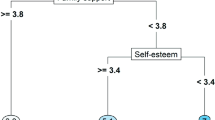Abstract
A treatment regime at a single decision point is a rule that assigns a treatment, among the available options, to a patient based on the patient’s baseline characteristics. The value of a treatment regime is the average outcome of a population of patients if they were all treated in accordance to the treatment regime, where large values are desirable. The optimal treatment regime is a regime which results in the greatest value. Typically, the optimal treatment regime is estimated by positing a regression relationship for the outcome of interest as a function of treatment and baseline characteristics. However, this can lead to suboptimal treatment regimes when the regression model is misspecified. We instead consider value search estimators for the optimal treatment regime where we directly estimate the value for any treatment regime and then maximize this estimator over a class of regimes. For many studies the primary outcome of interest is survival time which is often censored. We derive a locally efficient, doubly robust, augmented inverse probability weighted complete case estimator for the value function with censored survival data and study the large sample properties of this estimator. The optimization is realized from a weighted classification perspective that allows us to use available off the shelf software. In some studies one treatment may have greater toxicity or side effects, thus we also consider estimating a quality adjusted optimal treatment regime that allows a patient to trade some additional risk of death in order to avoid the more invasive treatment.
Similar content being viewed by others
References
Bai X, Tsiatis AA, O’Brien SM (2013) Doubly-robust estimators of treatment-specific survival distributions in observational studies with stratified sampling. Biometrics 69:830–839
Brinkley J, Tsiatis AA, Anstrom KJ (2009) A generalized estimator of the attributable benefit of an optimal treatment regime. Biometrics 21:512–522
Cortes C, Vapnik V (1995) Support-vector networks. Mach Learn 20(3):273–297
Hubbard AE, van der Laan MJ, Robins JM (1999) Nonparametric locally efficient estimation of the treatment specific survival distributions with right censored data and covariates in observational studies. In: Halloran E, Berry D (eds) Statistical models in epidemiology: the environment and clinical trials. Springer, New York, pp 134–178
Moodie E, Richardson TS, Stephens D (2007) Demystifying optimal dynamic treatment regimes. Biometrics 63:447–455
Murphy SA (2003) Optimal dynamic treatment regimes (with discussion). J R Stat Soc Ser B 65:331–366
Orellana L, Rotnitzky A, Robins JM (2010) Dynamic regime marginal structural mean models for estimation of optimal treatment regimes, part I: main content. Int J Biostat. doi:10.2202/1557-4679.1242
Robins JM (2004) Optimal structured nested models for optimal sequential decisions. In: Lin DY, Heagerty PJ (eds) Proceedings of the second seattle symposium on biostatistics. Springer, New York, pp 189–326
Robins J, Orellana L, Rotnitzky A (2008) Estimation and extrapolation of optimal treatment and testing strategies. Stat Med 27:4678–4721
Rubin DB (1978) Bayesian inference for causal effects: the role of randomization. Ann Stat 6:34–58
Tsiatis AA (2006) Semiparametric theory and missing data. Springer, New York
van der Laan MJ, Luedtke AR (2014) Targeted learning of the mean outcome under an optimal dynamic treatment rule. U.C. Berkeley Division of Biostatistics Working Paper Series. Working Paper 325
Zhang B, Tsiatis AA, Laber EB, Davidian M (2012a) A robust method for estimating optimal treatment regimes. Biometrics 68:1010–1018
Zhang B, Tsiatis AA, Davidian M, Zhang M, Laber EB (2012b) Estimating optimal treatment regimes from a classification perspective. Stat 1:103–114
Zhao L, Tian L, Cai T, Claggett B, Wei LJ (2013) Effectively selecting a target population for a future comparative study. J Am Stat Assoc 108:527–539
Zhao Y, Zeng D, Rush AJ, Kosorok MR (2012) Estimating individualized treatment rules using outcome weighted learning. J Am Stat Assoc 107:1106–1118
Zhao Y, Kosorok MR, Zeng D (2009) Reinforcement learning design for cancer clinical trials. Stat Med 28:3294–3315
Acknowledgments
This research was supported by NIH Grants R01 HL118336 and P01 CA142538. The authors gratefully acknowledge Dr. Sean O’Brien, Dr. William Weintraub, Dr. Fred Edwards, and the ASCERT investigator team for assembling the study database.
Author information
Authors and Affiliations
Corresponding author
Electronic supplementary material
Below is the link to the electronic supplementary material.
Rights and permissions
About this article
Cite this article
Bai, X., Tsiatis, A.A., Lu, W. et al. Optimal treatment regimes for survival endpoints using a locally-efficient doubly-robust estimator from a classification perspective. Lifetime Data Anal 23, 585–604 (2017). https://doi.org/10.1007/s10985-016-9376-x
Received:
Accepted:
Published:
Issue Date:
DOI: https://doi.org/10.1007/s10985-016-9376-x




